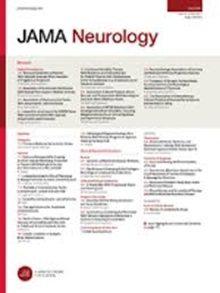醋酸甲孕酮与美国脑膜瘤的风险
IF 21.3
1区 医学
Q1 CLINICAL NEUROLOGY
引用次数: 0
摘要
重要性:在美国,缺乏明确醋酸甲孕酮可导致脑膜瘤风险的数据。目的探讨使用醋酸甲孕酮及其他相关孕激素的女性脑膜瘤的相对危险度。设计、环境和参与者这项基于人群的回顾性队列研究使用了来自TriNetX的数据,TriNetX是一个包含68家医疗机构的美国国家数据库。数据分析时间为2004年12月至2024年12月。通过倾向评分匹配分析比较两组间脑膜瘤诊断的发生率。参与者包括仅使用以下1种黄体酮/避孕药的女性样本:储存醋酸甲羟孕酮、口服醋酸甲羟孕酮、联合口服避孕药、宫内节育器、单片黄体酮或皮下植入式避孕药。对照组包括未使用这些激素治疗的女性。在分析时TriNetX的118 289 082名患者中,61 588 239名患者为女性,符合条件。使用国际疾病分类、现行程序术语和TriNetX中的RxNorm代码定义患者。主要观察指标为脑膜瘤的诊断。计算相对风险和需要伤害的数量。结果符合纳入标准的患者有10 425 438例,纳入时平均年龄为33.4岁。倾向评分匹配后,88 667例患者纳入醋酸甲孕酮储存组,平均年龄26.2岁。与对照组相比,使用醋酸甲孕酮诊断脑膜瘤的相对风险为2.43 (95% CI, 1.77-3.33)。值得注意的是,这种风险仅限于暴露时间超过4年或开始处方年龄超过31岁的患者。与对照组相比,口服醋酸甲羟孕酮的相对危险度增加1.18 (95% CI, 1.10-1.27)。任何其他避孕方法均未发现脑膜瘤诊断风险增加。储用醋酸甲孕酮组需要伤害的患者为1152例,口服醋酸甲孕酮组需要伤害的患者为3020例。结论和相关性:在本研究中,接受醋酸甲羟孕酮治疗的女性随后患脑膜瘤的相对风险更高,特别是长时间接触醋酸甲羟孕酮并在年龄较大时开始用药的女性。危害所需的高数量表明总体上临床风险较低。本文章由计算机程序翻译,如有差异,请以英文原文为准。
Depot Medroxyprogesterone Acetate and Risk of Meningioma in the US
ImportanceThere lacks data clarifying the meningioma risk conferred by depot medroxyprogesterone acetate in the US.ObjectiveTo examine the relative risk of meningioma diagnosis in women using depot medroxyprogesterone acetate and other related progestins.Design, Setting, and ParticipantsThis retrospective population-based cohort study used data from TriNetX, a US national database of 68 health care organizations. Data were analyzed from December 2004 to December 2024. The incidence of meningioma diagnosis was compared between treatment groups through propensity-score matched analyses. Participants included a sample of females with use of only 1 of the following progestins/contraceptives: depot medroxyprogesterone acetate, oral medroxyprogesterone acetate, combined oral contraceptives, intrauterine devices, progestin only pills, or subdermal implantable contraceptive. The control group included females without use of these hormonal treatments. Of the 118 289 082 total patients in TriNetX at the time of analysis, 61 588 239 patients were female and eligible.ExposuresPatients were defined using diagnostic codes from the International Classification of Diseases, Current Procedural Terminology , and RxNorm codes within TriNetX.Main Outcome and MeasureThe main outcome was meningioma diagnosis. Relative risks and number needed to harm were calculated.ResultsThere were 10 425 438 patients that met inclusion criteria with a mean age of 33.4 years at inclusion. After propensity score matching, 88 667 patients with mean age of 26.2 years at inclusion were in the depot medroxyprogesterone acetate group. Use of depot medroxyprogesterone acetate had a relative risk of 2.43 (95% CI, 1.77-3.33) for meningioma diagnosis compared with controls. Notably, this risk was confined for patients with longer than 4 years of exposure or starting the prescription at ages older than 31 years. Oral medroxyprogesterone acetate had increased relative risk of 1.18 (95% CI, 1.10-1.27) compared with controls. No increased risk of meningioma diagnosis was found with any other contraceptive. The number needed to harm for the depot medroxyprogesterone acetate was 1152 patients and 3020 patients for oral medroxyprogesterone acetate.Conclusions and RelevanceIn this study, women receiving depot medroxyprogesterone acetate had a greater relative risk of subsequent meningioma diagnosis, especially with prolonged exposures and starting the medication at older ages. The high number needed to harm suggests low clinical risk overall.
求助全文
通过发布文献求助,成功后即可免费获取论文全文。
去求助
来源期刊

JAMA neurology
CLINICAL NEUROLOGY-
CiteScore
41.90
自引率
1.70%
发文量
250
期刊介绍:
JAMA Neurology is an international peer-reviewed journal for physicians caring for people with neurologic disorders and those interested in the structure and function of the normal and diseased nervous system. The Archives of Neurology & Psychiatry began publication in 1919 and, in 1959, became 2 separate journals: Archives of Neurology and Archives of General Psychiatry. In 2013, their names changed to JAMA Neurology and JAMA Psychiatry, respectively. JAMA Neurology is a member of the JAMA Network, a consortium of peer-reviewed, general medical and specialty publications.
 求助内容:
求助内容: 应助结果提醒方式:
应助结果提醒方式:


